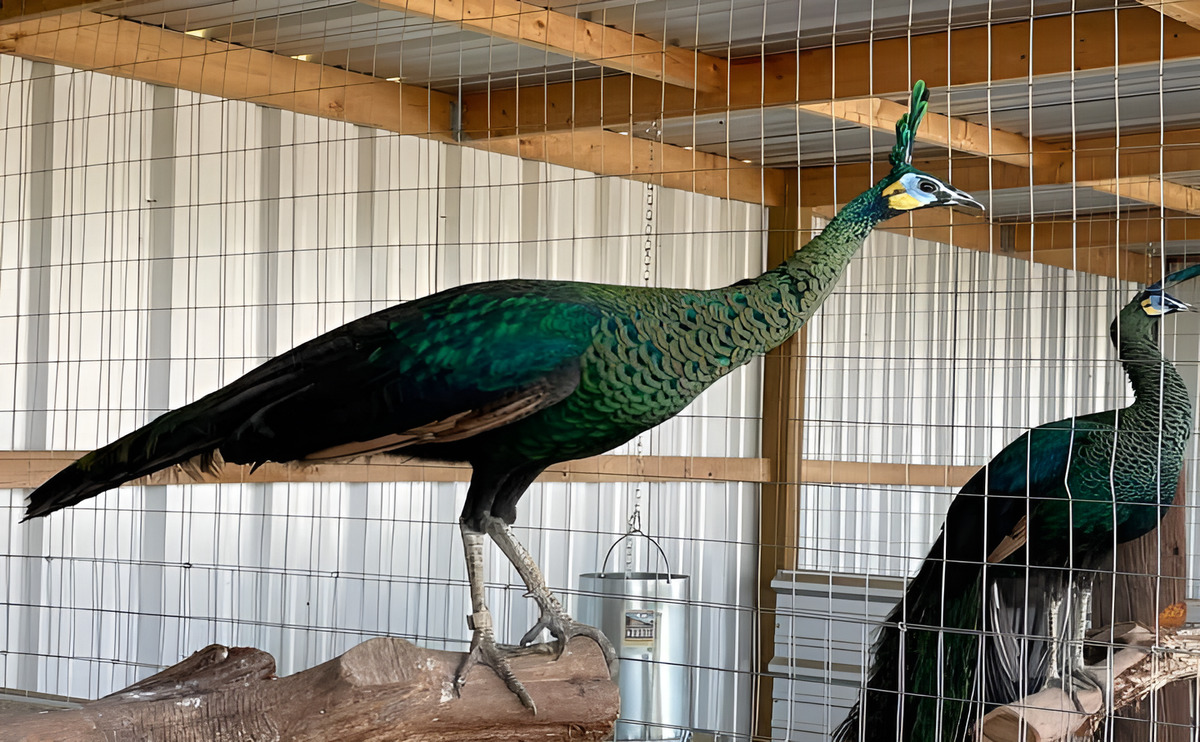Blog
How to Make a Bird Cage Divider – Complete Guide by Birds Jungle

It seems important to cage the bird to save on space and to bond with the bird, but it soon proves to be quite a bother when the birds are not compatible or have different care requirements. What you need is a bird cage divider. We are going to explain step wise in this blog, how to make a bird cage divider which is fascinating, secure, and economical at the same time.
Birds Jungle is convinced that, in addition to a range of beautiful birds that we are selling in Pakistan, we ought to also help you to take care of them responsibly. Whether you have parrots, pheasants, or finches, a homemade divider may save much space and reduce stress.
When Might a Bird Cage Divider be Required?
To Separate Aggressive, Territorial Birds
The lives of birds are not always associated with harmony. Certain birds become territorial, especially when they hunt in the mating season. There should be a cage divider that lets birds see each other but does not make them physically close.
Breeding Pairs or New Birds
When a new bird is introduced into the habitat or a pair is getting ready to breed, putting a divider across the cage offers occasional separation, minimizing stress and easing bonding with gentleness.
In the Case of Health or Feeding Needs, Confluence
When a particular bird requires recuperation or a special diet, a divider ensures special attention. Handy tip: Do you want to know more about bird health? Go to our blog: Can a Bird Die from Stress? Read our blog: Can a Bird Die from Stress?
All Materials Required for Making a Bird Cage Divider
No experience in carpentry is necessary to assemble a cage divider. The list of supplies you’ll need is given below.
- A PVC-coated wire mesh or an acrylic sheet should be used for both safety reasons and to prevent birds from ingesting toxic materials.
- Either zip ties or stainless steel clips
- Wire cutters, together with a measuring tape
- Drill (If solid divider material is utilized)
- A further safety measure entails adding foam or plastic edge guards.
Choose materials that welcome birds, resist oxidation, and are easy to maintain.

Instructions for Making a Bird Cage Divider – Step by Step
Measure the Bird Cage Interior
Utilize a measuring tape to determine the interior dimensions of your bird cage, wherever the divider will be placed. Be sure to take accurate measurements so you wind up with a perfect fit.
Trim the Divider Material
Using wire cutters (or an equivalent tool), slice the wire mesh or acrylic sheet so it precisely matches the interior dimensions of the cage. Should you choose a solid material, such as plastic or wood, make certain to drill small ventilation holes.
Soften the Edges
Trouncing any sharp edges with a file will help prevent any injuries. They could also be safeguarded by installing bird-safe foam or plastic edge guards over them.
Secure the Divider
Push the divider into the cage, secure it with zip ties, twist wires, or metal clips, and then add finish touches as needed. Make certain the divider stays sturdy and resists being bent whenever your birds rest on or lean against it.
A Variety of Designs for Your Divider
Solid Divider
Perfect for birds that tend to get easily distracted or anxious. It provides both visible and physical separations.
Mesh Divider
By offering visual and aeration areas to birds, it is ideal for facilitating bonding or the introduction of new birds.
Sliding and Removable Divider
It is particularly so for cages dedicated to breeding. With this option, the divider can be removed once the birds grow accustomed to one another or build a bond.
Elsewhere, We Review Some Cautions To Observe When Putting Together a Cage Divider
- Keep clear of any material that rusts or flakes.
- Under no circumstances use glues or paints that are harmful to birds.
- Avoid crafting dividers with sharp edges or spots titled to let wires come undone.
- Be sure to leave sufficient air circulation in warm climates.
Birds Jungle has noticed that cages improperly set up can inflict injury or cause sustained stress. Embracing suitable precautionary steps will safeguard your bird’s health.
Benefits of Deploying a Cage Divider
- Keeps birds from sustaining injuries or enduring stress.
- It permits you to monitor multiple birds in a single space.
- Foreseen to encourage effective breeding and taming practices.
- It promotes improved bonding while presenting minimal risk.
Would you like expert direction for crafting a safe cage environment for your exotic birds? Discover customised products and support services for bird owners in Pakistan on our homepage.

For You, Final Thoughts: Consider a Smarter Way To Maintain Multiple Birds.
Building a bird cage divider enables you to safeguard your birds’ health, promote calmness, and uphold well-managed care. Whether you have parrots, pheasants, or finches, a divider allows you to utilize limited space while keeping them safe and serene.
Short FAQs About Bird Cage Dividers
Is It Okay To Use Cardboard or Wood for a Divider?
Not recommended. These materials could trap moisture or be promptly nibbled by birds. Opt for materials that are non-toxic and must be thoroughly washable.
Would the Divider Impose Any Stress on My Bird?
If set up properly, it will present no issues. Introducing a divider can help keep anxiety levels low, especially for birds that have been fighting or have been triggered by excessive stimulation.
At What Cadence Should the Divider Be Cleaned?
Wash the divider no more than once every seven days; clean off food or droppings as soon as they appear. Hygiene matters!

